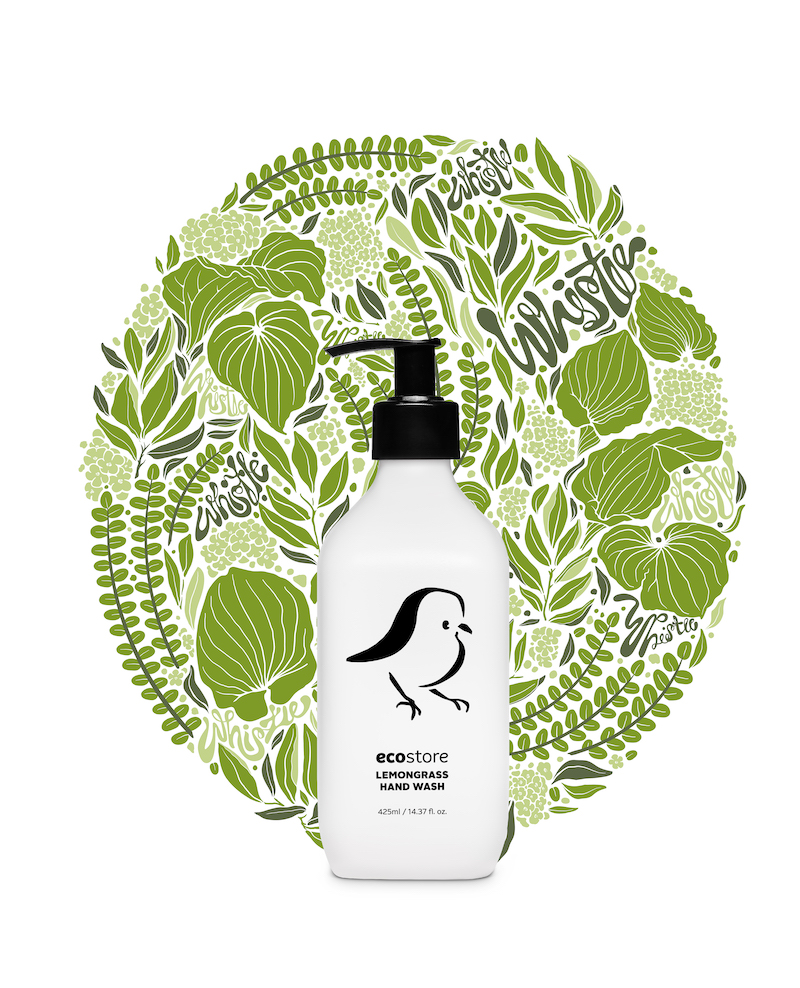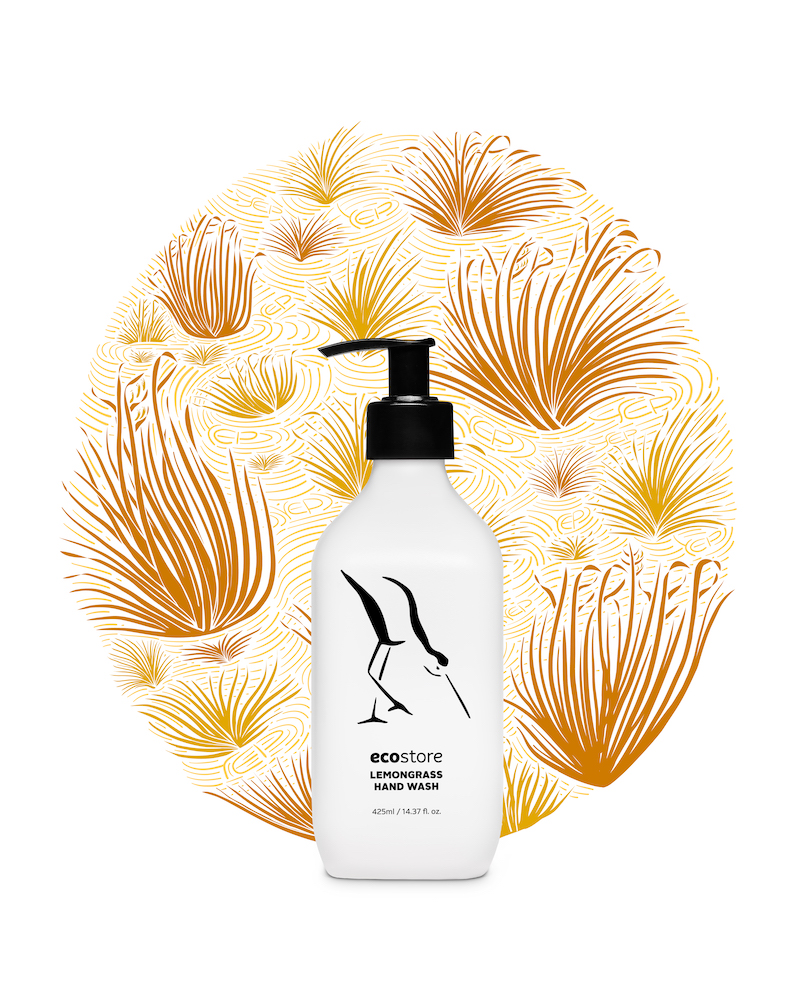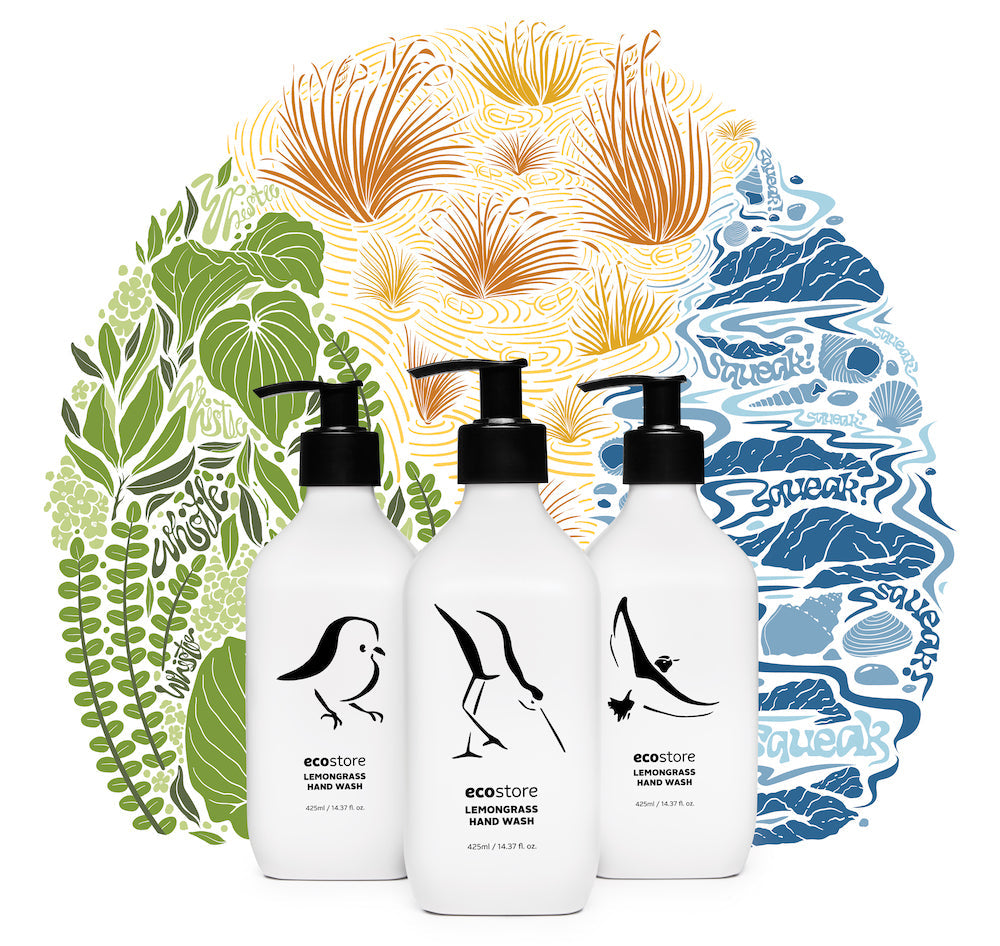
LIMITED EDITION HAND WASH RANGE
Designed to be refilled, each bottle features one of three Underbirds illustrations by artist Pablo Kraus – Kakaruia, Tuturuatu, and Kakī. These lesser known and ‘nationally critical’ native birds have beautiful voices, yet they’re at risk of falling silent. It’s up to us Kiwis to make them a familiar sound in our environment once again.

KAKARUIA (Chatham Island Black Robin)
Back from the brink – this sooty little nugget was almost completely wiped out, with a population of just 5, surviving thanks to a single mature female (Old Blue) and the efforts of some very dedicated humans. Every one of the roughly 250 Kakaruia alive in the Chathams today is her descendant. The Black Robin mates for life, nests in hollow trees, and isn't much of a flyer. Still very vulnerable to predators, Kakaruia breed and socialise in dense forest, foraging for bugs in trees and leaf litter.
You can vote for the Kakaruia in Forest & Bird’s New Zealand Bird of the Year 2021 (Te Manu Rongonui o Te Tau) campaign.

KAKĪ (Black Stilt)
This chic, all-black stilt – of which there are just 100 left – has long red legs and a fine, pointed black bill. Its habitat lies in the central South Island – especially around lonely braided riverbeds and wetlands, where it nests close to food sources – the mayfly is a particular treat. Black stilts first breed when aged 2 or 3, in solitary, territorial pairs, defending their territories against other stilts. In spring, eggs (usually 4) are laid in vegetation, open banks, or small depressions. This quiet wader is at risk from flooding, introduced predators and hawks.
You can vote for the Kakī in Forest & Bird’s New Zealand Bird of the Year 2021 (Te Manu Rongonui o Te Tau) campaign.

TUTURUATU (Shore Plover)
This small, colourful beach lover is found on a few predator-free islands in the Chathams and mainland New Zealand. One of the world’s rarest shorebirds (~175 adults), its territorial call is a loud ringing, although conversations within pairs are low-key. While vulnerable to introduced pests on land, these plucky plovers are strong, long distance fliers – voyaging as far as 850km. They come home to breed monogamously and defend their nest, which they create under beachside plants, stones, or driftwood.
You can vote for the Tuturuatu in Forest & Bird’s New Zealand Bird of the Year 2021 (Te Manu Rongonui o Te Tau) campaign.
Proud to support Forest & Bird NZ
Forest & Bird is Aotearoa / New Zealand's leading independent conservation organisation. They work to defend nature – across our Land, Fresh water, Oceans, and Climate & Economy. This October, we’re asking New Zealanders to vote for their favourite Underbird in the Bird of the Year – Te Manu Rongonui o Te Tau competition to raise awareness of the threats facing these incredible manu (birds).
Want to do more? Check out this online article about further ways you can help save native birds in New Zealand.
Frequently asked questions
If you’d like to find out more about another topic or can’t find what you’re looking for here, please check out our full FAQ list.
Read more

At ecostore, we’ve never just focused on the ‘money’ side of the business. For us it’s always been about making the world a safer place, putting people’s health first and helping them choose produc...

I stumbled upon this poem recently and it resonated deeply. We’re at a time here in New Zealand where we are forced to slow down, potentially to reassess. Being at home with fewer distractions, the...






